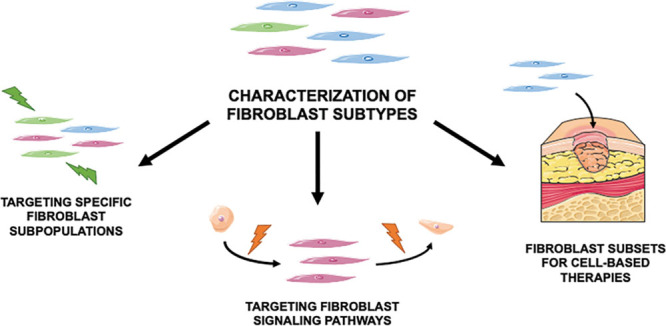Fig. 5.

Therapeutic directions for fibroblast heterogeneity. Although basic science research in fibroblast heterogeneity has rapidly uncovered new knowledge about different fibroblast subtypes (top) and their functions, most of this knowledge remains to be clinically translated. We envision several possible broad directions for translating from the bench to the bedside. Bottom left: identification of fibroblast subsets involved in specific pathologies, such as scarring and fibroses, may enable those specific cells to be targeted to prevent and treat disease. Bottom middle: understanding of the precise signaling pathways mediated by fibroblast subpopulations and governing their behavior may reveal novel molecular targets to manipulate fibroblast behavior clinically. Bottom right: with the growing importance of cell- and tissue engineering–based therapeutic approaches, identification of the specific functions of different fibroblast types (eg, profibrotic vs. proregenerative) may enable particular fibroblasts with desired functions to be applied directly for treatment, such as in chronic wounds. Figure includes elements obtained from Servier Medical Art (http://smart.servier.com), licensed under a Creative Common Attribution 3.0 Generic License.
